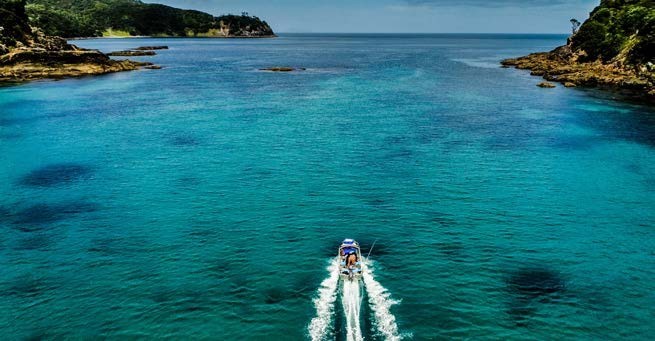THE HAURAKI GULF IS STRUGGLING
You don’t have to be a scientist to notice changes in the Hauraki Gulf Marine Park. There are fewer workups with seabirds swooping into the water, and if you’re fishing it’s increasingly uncommon to reel in anything other than a snapper.
After more than 12 years of ‘all hui and not a lot of do-ey’, the Hauraki Gulf Marine Protection Bill was released last year, leaving many confused about whether the Bill will make a meaningful difference in restoring the mauri (life force) of the Gulf.
The Parliamentary Environment Select Committee is currently reviewing the Protection Bill and held hearings over several days, in Auckland in early March. Successive submitters urged the Committee to consider the wider impacts of creating 12 new marine reserves with customary take, a couple of Seabed Protection Areas and extending two marine reserves.
Gordon McIvor, President of the Mercury Bay Game Fishing Club, highlighted that protecting small pockets will not solve widespread issues of biodiversity loss and depleting fish populations, advising the Committee that, “An oasis in a desert does not solve the issues in the Gulf.”
Essentially, the Protection Bill does not go far enough.
At the hearings, representatives from various Coromandel groups told the Committee the Bill must address the serious issues impacting residents – overfishing leading to depleted local waters, and industrial fishing methods destroying the marine environment.
The depletion of our scallop beds, unhealthy mushy-fleshed fish, kina barrens, and the increasing prevalence of pest species such as caulerpa seaweed are obvious signs that the marine ecosystem is struggling.
Creating marine reserves to protect small areas from destructive fishing methods will only intensify fishing pressure within the spaces left available in the Marine Park. Bottom trawling, dredging, and Danish seining will continue to destroy habitats and marine life on the seafloor.
LegaSea has been campaigning for the entire Marine Park seafloor to be protected, and we’re not alone.
Professor Simon Thrush, a globally recognised scientist, was astounded that such destructive fishing methods will still be permitted in the Gulf under the proposed Bill. Simon has completed extensive research on the Gulf’s seafloor. He explained to the Committee that areas claimed to be ‘muddy and sandy’ that will remain open to trawling, are in fact highly diverse and aren’t any less worthy of protection.
Professor Thrush was also highly embarrassed at the length of time it took to develop the Protection Bill, likening it to a snail’s pace. We agree, Professor – it’s embarrassing that 24 years after creating the Marine Park, more than a decade of Sea Change discussions, and clear scientific evidence, the Bill is all we have to show for that investment.
As Mr McIvor said to the Committee, “I encourage you to consider the wider implications that this Bill will have on our communities and the marine environment. Ultimately, I urge the Committee to focus less on protecting what’s left, and more on restoring our coastal fish populations.”
Ka pai, Gordon.

Creating marine reserves to protect small areas from destructive fishing methods will only intensify fishing pressure within the spaces left available in the Marine Park. Bottom trawling, dredging, and Danish seining will continue to destroy habitats and marine life on the seafloor.
Photo: Guy Macindoe.